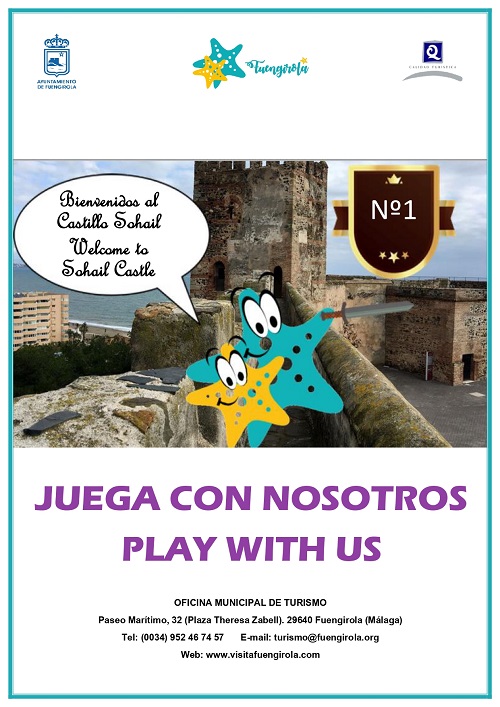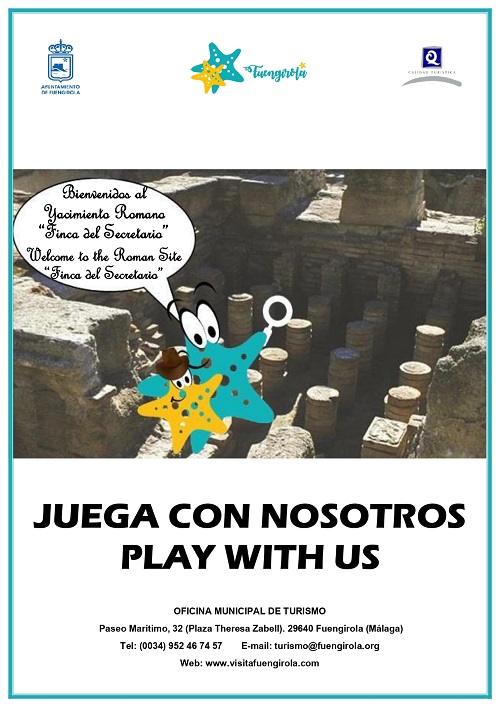
Historical Heritage
Since ancient times, the privileged enclave occupied by Fuengirola attracted and left enchanted however many Mediterranean civilisations arrived on these coasts.
Each of these peoples, Phoenicians, Romans, Arabs... settled here leaving vestiges of their culture, which we can today appreciate through our historical heritage.
Sohail Castle
OPEN. FREE ENTRANCE.
ADDRESS: C/ Tartesos. 29640 Fuengirola (Málaga).
 LOCATION
LOCATION
Monday closed
From Tuesday to Friday: 10 am - 2 pm.
Saturdays, Sundays and holidays: 10 am - 18 pm.
Park closed in case of weather alert.
TELEPHONE: 663 99 67 27
EMAIL: dinamizadoracastillo@fuengirola.org
ENVIRONMENT DIMENSION: 65.490 m2
Sohail Castle is located at the mouth of the river Fuengirola, on a small isolated hill that rises 38 metres above sea level. The magnificent geographical conditions of this place allowed, since ancient times, the continued settlement of its slopes by the Punics and Romans. On the ruins of their settlements, a first enclave was built in the Caliphate period (10th and 11th centuries) - perhaps a crenellated tower - and later the castle. Archaeological tests carried out years ago revealed Roman and possibly Phoenician remains (Suel City). Later, in the 12th century, the Almoravids built a defensive enclosure with an irregular ground plan. In 1485 the castle was occupied by the Christian army.
From that time onwards, the military enclosure underwent an inevitable process of readaptation of its architecture, such as the replacement of the angled-axis entrance with a direct entrance, the elimination of one of its eastern towers for the construction of a platform for the emplacement of cannons, or the rearrangement of the southwest corner of the wall with a loophole wall, after it was blown up by the Napoleonic army in the midst of the War of Independence.
The works carried out in recent years by the Fuengirola City Hall Workshop School have made it possible for Sohail Castle to be recovered as a meeting place for the people of Fuengirola with their History and as a space where different cultural events can be held, such as the famous Marenostrum Festival.
DOWNLOAD THE GUIDE HERE
VISIT THE ROMAN CITY OF SUEL

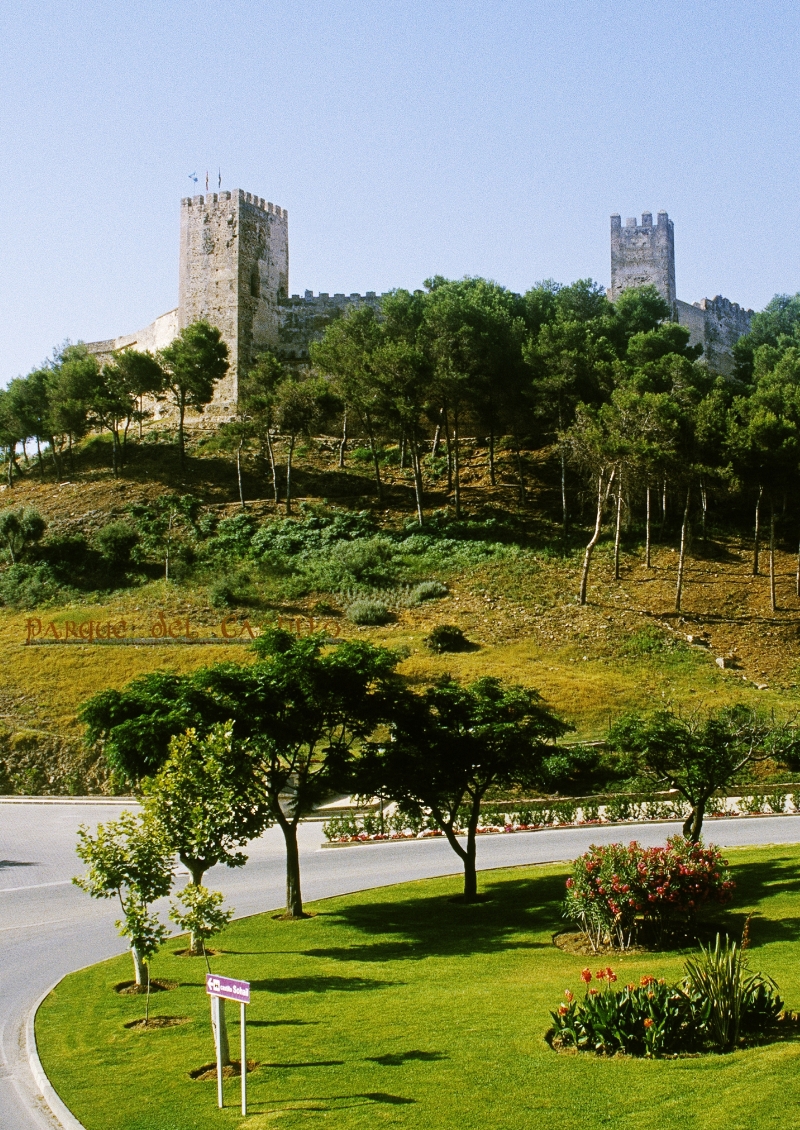
Roman Archaeological Park - Finca del Secretario
OPEN. FREE ENTRANCE.
ADDRESS: Av. Nuestro Padre Jesús Cautivo, 71. 29640 Fuengirola (Málaga)
 LOCATION
PARK OPENING HOURS (OCTOBER-APRIL): From Monday to Sunday: 10 am - 10 pm.
LOCATION
PARK OPENING HOURS (OCTOBER-APRIL): From Monday to Sunday: 10 am - 10 pm. 24th and 31st December: 10 am - 9 pm.
PARK OPENING HOURS (MAY-SEPTEMBER): From Monday to Sunday: 10 am - 12 am (midnight).
INTERPRETATION CENTRE OPENING HOURS (16 SEPTEMBER-14 JUNE):
Monday closed
From Tuesday to Friday: 10 am - 2 pm.
Saturdays, Sundays and holidays: 10 am - 2 pm // 3:30 pm - 6 pm.
24th and 31st December: 10 am - 2 pm.
Closed on 25th December, 1st and 6th January.
INTERPRETATION CENTRE OPENING HOURS (15 JUNE-15 SEPTEMBER):
Monday closed
From Tuesday to Friday: 10 am - 2 pm.
Saturdays, Sundays and holidays: 10 am - 2 pm // 7 pm - 10 pm.
Park and Interpretation Center closed in case of weather alert.
TELEPHONE: 952 46 74 57
EMAIL: fincasecretario@fuengirola.org
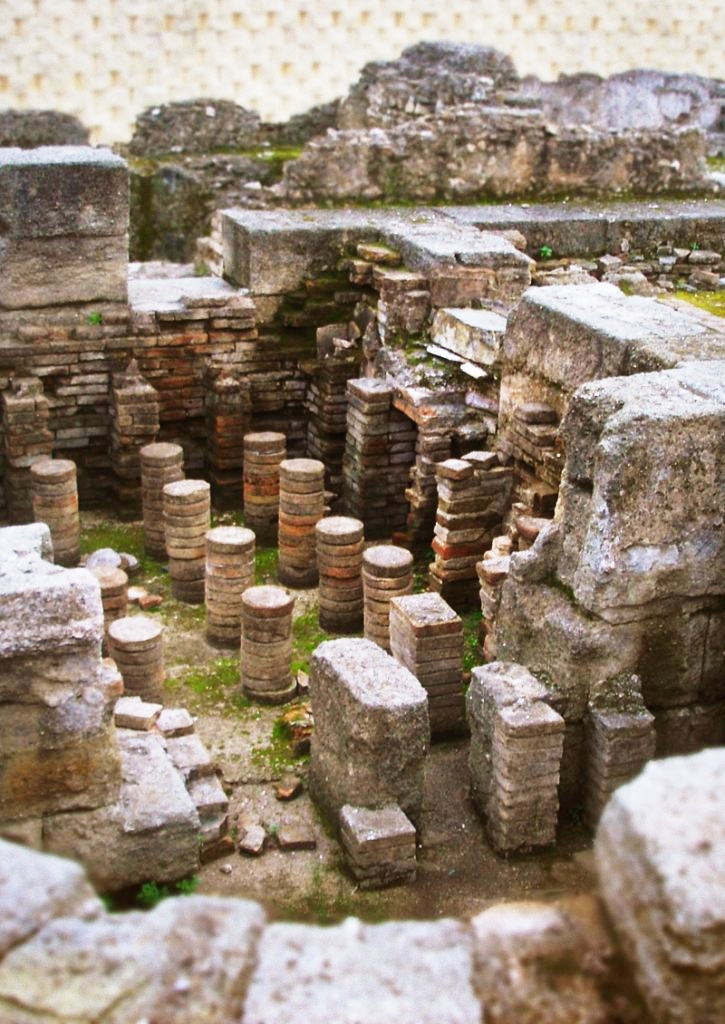
It is an archaeological complex with a life that would develop, depending on the data we know today, between the 1st and 6th centuries A. C. The enclave would revolve around a town whose residential area we only know, so far, a hot springs. The building was accessed by a monumental staircase that conserved remains of parietal paintings, and that converged in a distributor courtyard, porticoed (the bases of its twelve columns are preserved) and paved with a polychrome mosaic with geometric motifs.
Among its facilities it had two fountains, one of them shaped like an apse that was decorated with a parietal mosaic delimited by sea shells, as well as two pools that in one of the cases was covered with marble while in the other it was covered with opus signinum, next to a possible latrine with soil of this same material to which a small channel was attached through which the water ran. The heated area had four rooms, one of which conserved two bathtubs, in addition to having two furnaces delimited by walls intended to provide heat to the baths, set that also had a circular swimming pool with seats at its angles and a water tank from which a pipe was starting to lead the water to the thermal complex.
Regarding the industrial part of the enclave it is worth mentioning the presence of an alfar composed of five ceramic ovens, four of which, just the ones of greater dimensions, had a chamber that showed a central pillar. Next to these ovens were located two areas of landfills and a salt factory composed of a battery of eight pools and two annexed rooms.
DOWNLOAD THE GUIDE HERE
Roman Site - Thermal Baths of Torreblanca
OPEN. FREE ENTRANCE.
ADDRESS: Av. Torreblanca, s/n.. 29640 Fuengirola (Málaga)
 LOCATION
LOCATION
TELEPHONE: 952 46 74 57
EMAIL: termastorreblanca@fuengirola.org
The Roman site of the Termas de Torreblanca Torreblanca (2nd-6th century A.D.) was declared BIC in 2005 by Decree of the Junta de Andalucía. The recent acquisition by Fuengirola Town Council in 2017 (it was previously privately owned) has allowed cleaning and conservation work to be carried out on the site and it has become part of the archaeological heritage of the town.
The initial stage in the knowledge of this enclave, in the 1940s, was marked by the detection of various "walls and buttresses" that were cut by the national road 340. A few years later, in 1961, the archaeological space, in which architectural elements belonging to a Roman therma can already be glimpsed, was subjected to various removals that endangered its existence.
It was not until 1982 that the decision was taken to undertake the first excavation and research work on the site, which was continued with a second campaign in 1983.
The site is made up of different installations belonging to an architectural complex (thermal building and salting factory) and a necropolis. The chronology of these first structures corresponds to thermal baths from the 2nd century AD, although there are indications that point to an earlier occupation, as early as the 1st century AD. In the 5th century, the site became a necropolis, which continued until at least a century later.
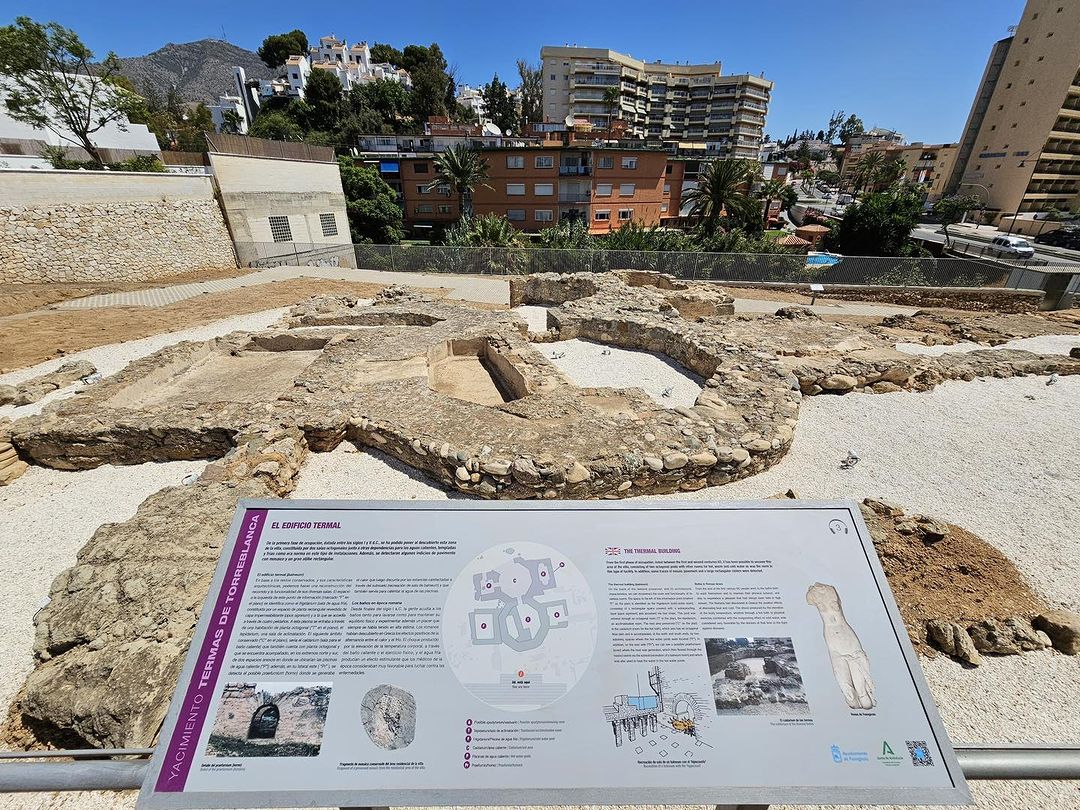
Cortijo de Acevedo
CLOSED
ADDRESS: Carretera de Cerros del Águila, s/n. Next to the Cemetery Park.
OPENING HOURS : Closed for restoration
This villa is located on a gentle slope close to the current mouth of the River Fuengirola, part of which is currently under the foundations of the modern Fuengirola Municipal Cemetery Park. The first excavations carried out on this site took place between 1990 and 1991, linked to the construction of the Fuengirola Cemetery Park.
The results reveal a first phase of occupation of the territory, prior to the change of Era, linked to the discovery of two coins from Malacca and another from Tingis, all of which can be dated to the 1st century BC. An architectural complex belonging to the urban part of a High Imperial villa was also detected, consisting of various rooms belonging to a baths (with some suspension pilasters), decorated with mosaics, several opus signinum basins and opus spicatum pavements, as well as some small canals. Several wall structures have also been uncovered, interpreted as storerooms and a necropolis, from which comes the epigraph of one of its inhabitants during the 2nd century AD, Aemilia Aemiliana Suelitana, as well as a hoard made up of several hundred coins.


